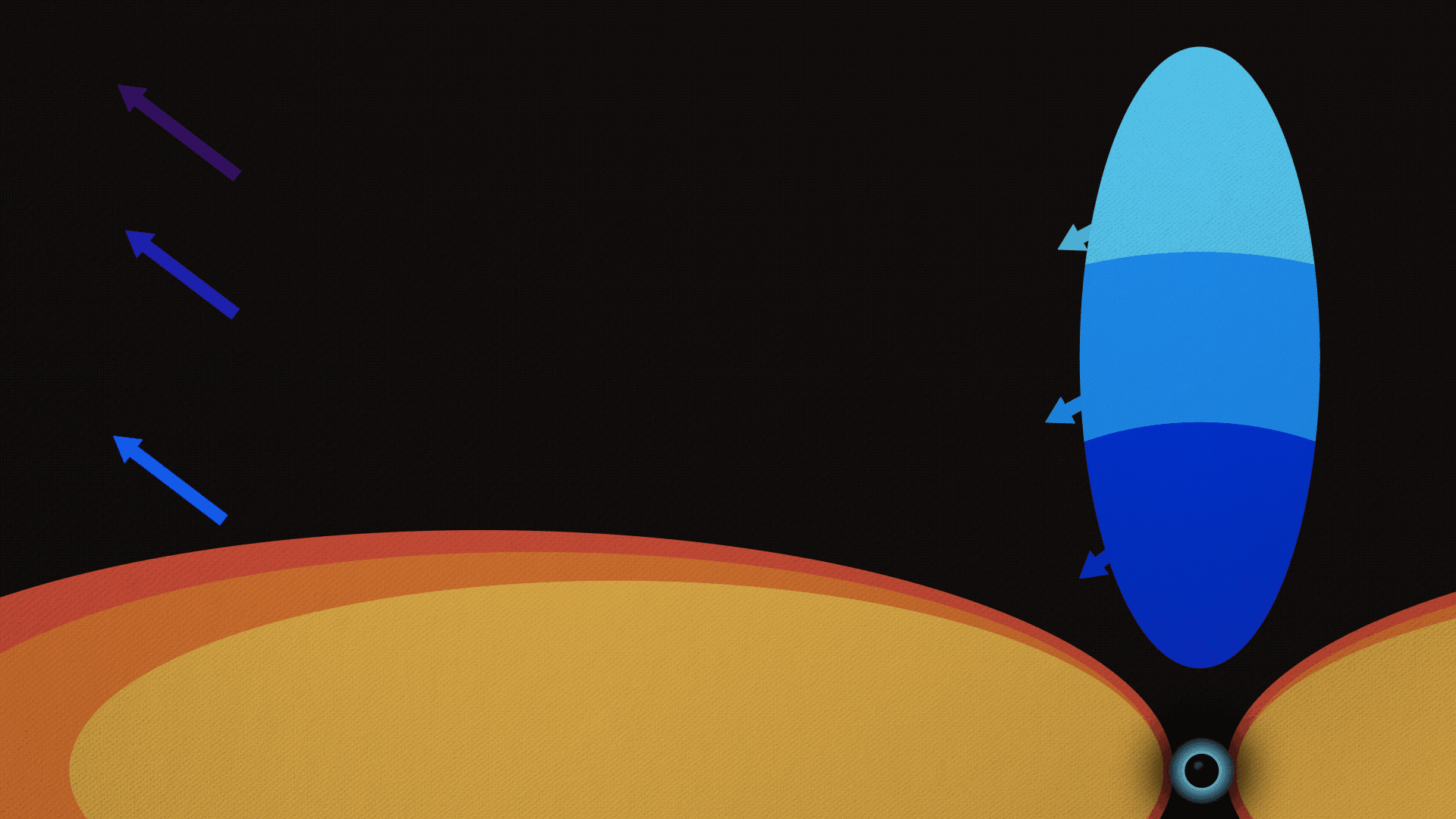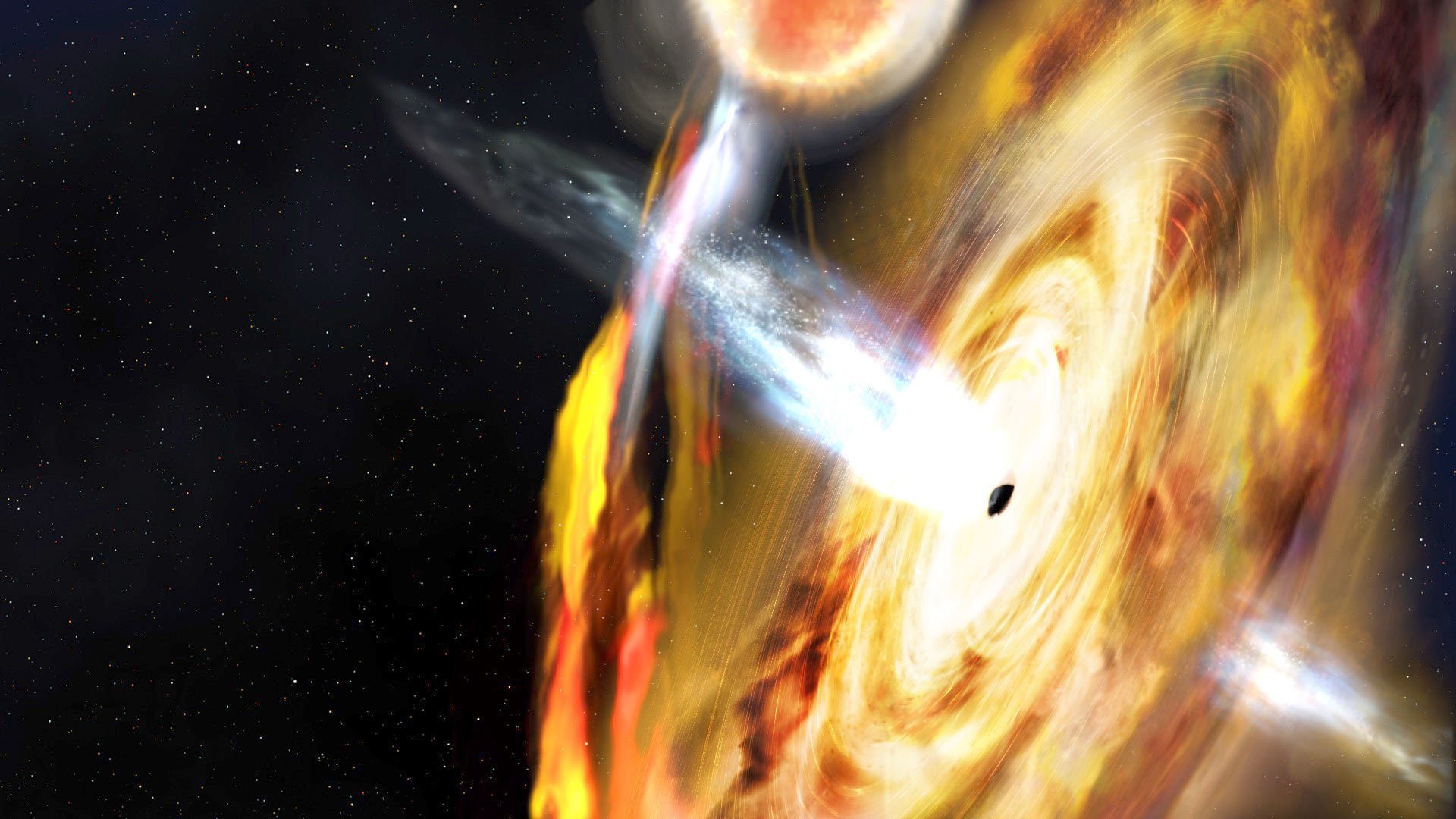- January 09, 2019
- By Maryland Today Staff
A UMD-led team of astronomers has charted the environment surrounding a relatively small, “stellar mass” black hole that is 10 times the mass of the sun. The observations provide the clearest picture to date of how these small black holes consume matter and emit energy.
Their results were to be presented today to the American Astronomical Society in Seattle. A research paper will also be published tomorrow in Nature. Its lead author is Erin Kara, the Neil Gehrels Prize Postdoctoral Fellow in the University of Maryland’s Department of Astronomy,
Using NASA’s Neutron star Interior Composition Explorer (NICER) payload aboard the International Space Station, the team detected X-ray light from a recently discovered black hole, J1820, as it consumed material from a companion star. Waves of X-rays formed “light echoes” that reflected off the swirling ring of gas near the black hole, known as the accretion disk, revealing changes in the environment’s size and shape.
“Previously, these light echoes off the inner accretion disk were only seen in supermassive black holes, which are millions to billions of solar masses and undergo changes slowly,” said Kara, a Hubble Fellow with a co-appointment at NASA’s Goddard Space Flight Center and the Joint Space-Science Institute. “Stellar black holes like J1820 have much lower masses and evolve much faster, so we can see changes play out on human time scales.”
J1820 is located about 10,000 light years from Earth, in the direction of the constellation Leo. Astronomers were unaware of the black hole’s presence until March 11, 2018, when the Japanese Aerospace and Exploration Agency’s Monitor of All-sky X-ray Image (MAXI), also aboard the space station, spotted an outburst.
In just a few days, J1820 went from a totally unknown black hole to one of the brightest objects in the X-ray sky. NICER moved quickly to capture this dramatic transition and continues to follow the fading tail of the eruption.
Gravitational and magnetic forces heat the disk to millions of degrees Celsius, making it hot enough to produce X-rays at the inner parts of the disk, near the black hole. Outbursts occur when an instability in the disk causes a flood of gas to suddenly rush inward toward the black hole, like a gaseous avalanche. Astronomers do not yet understand what causes these disk instabilities.
Astrophysicists want to better understand how the inner edge of a black hole’s accretion disk—and the corona above it, where subatomic particles heated to 1 billion degrees Celsius glows in higher-energy X-rays —change in size and shape as a black hole consumes material from a companion star. If scientists can understand how and why these changes occur in stellar-mass black holes over a period of weeks, they could gain new insights into how supermassive black holes evolve over millions of years and how they affect the galaxies where they reside.
Topics
Research